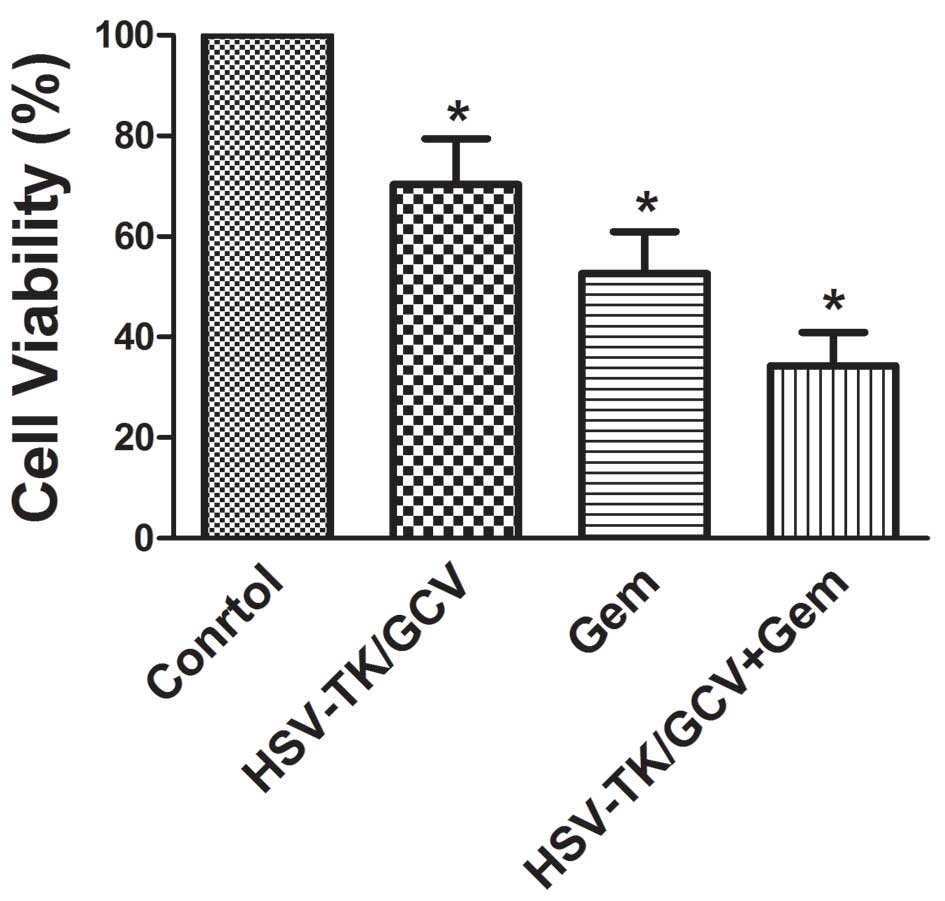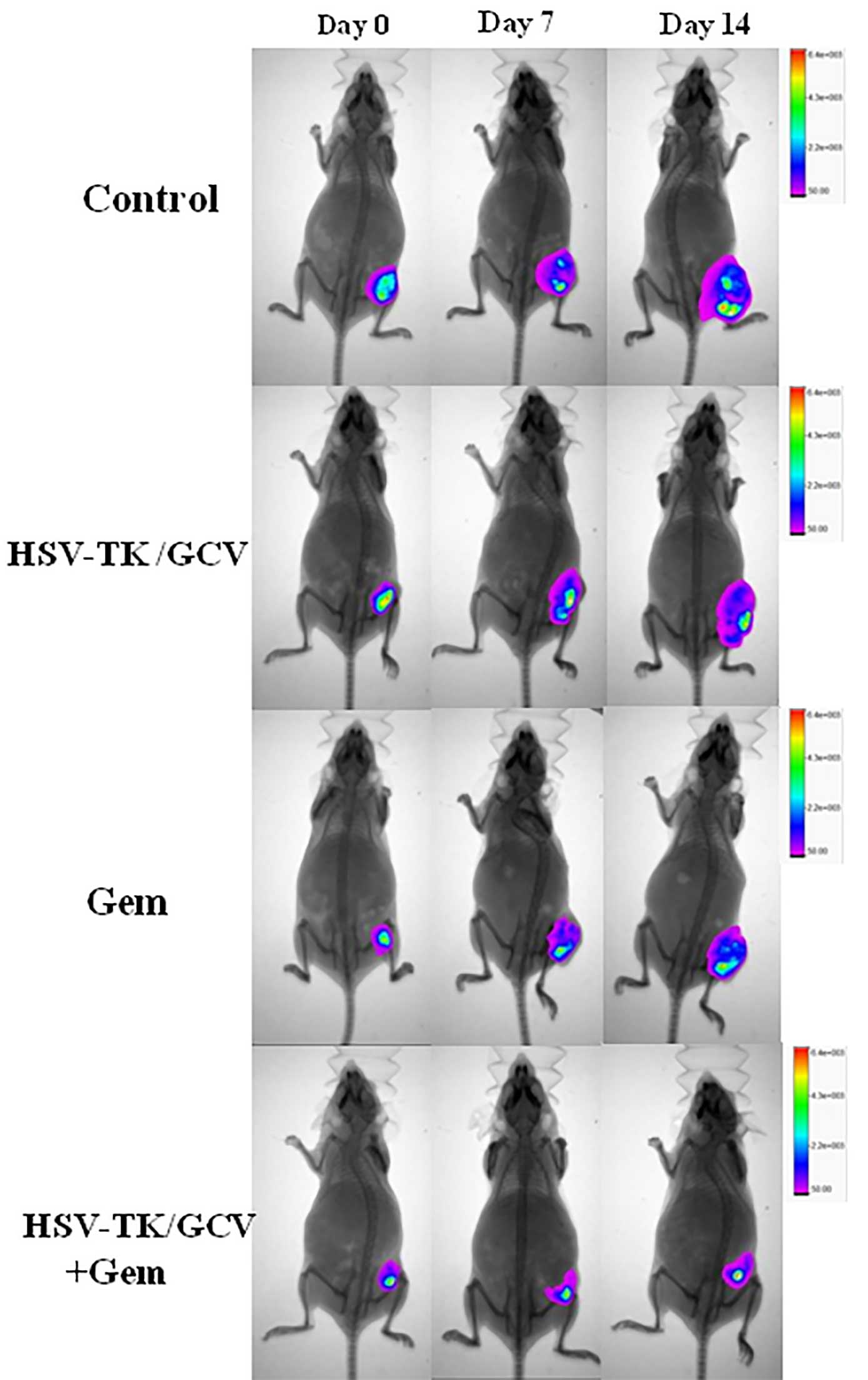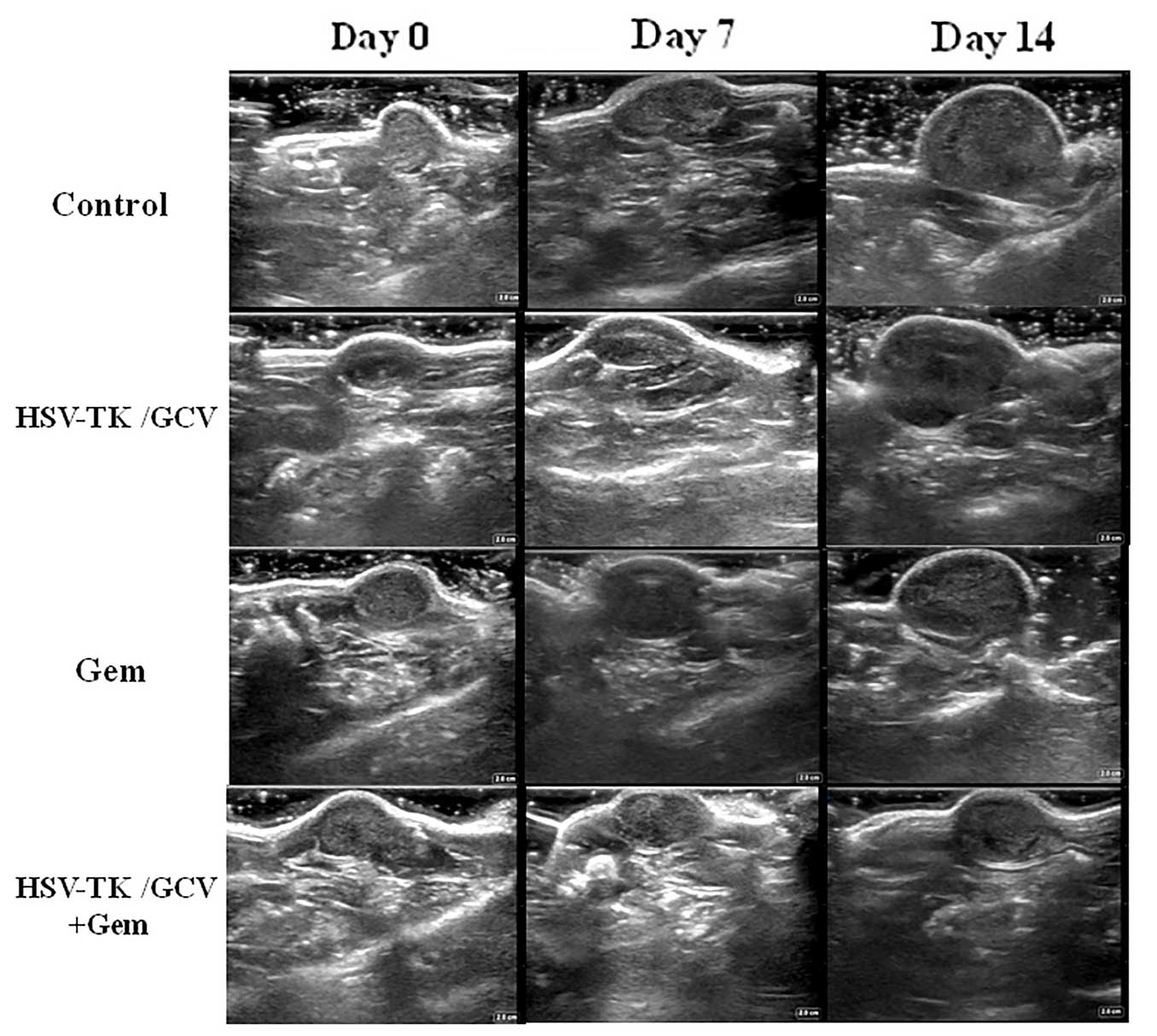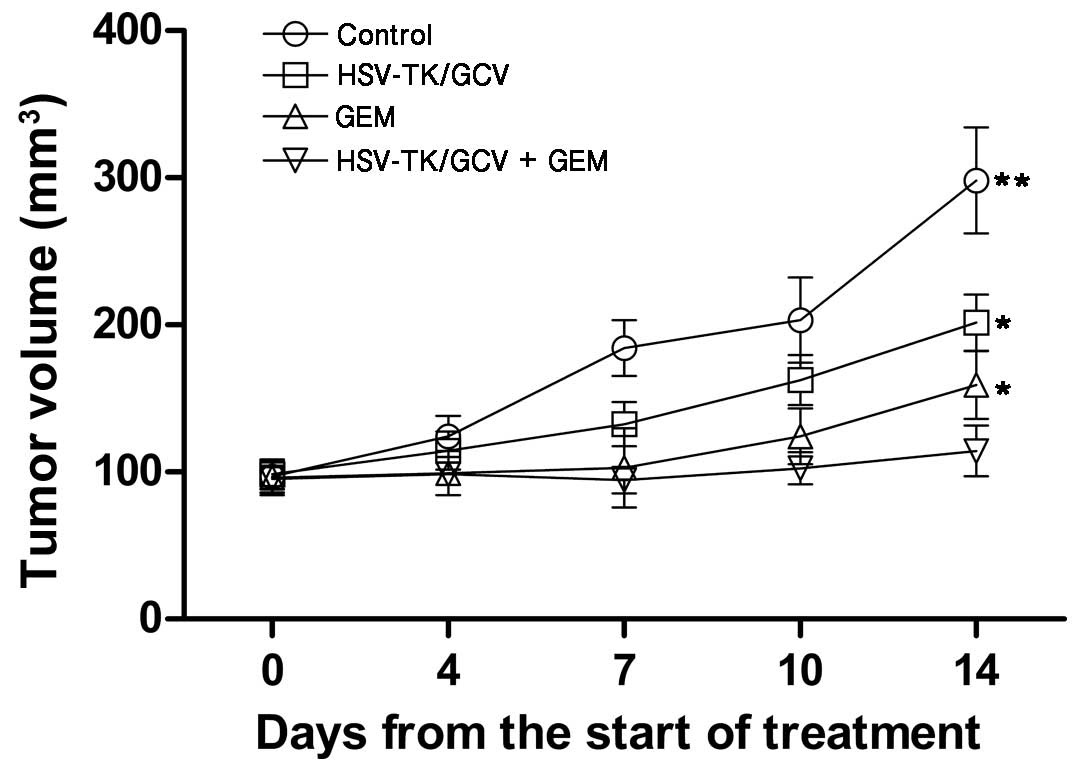|
1.
|
Nakeeb A, Pitt HA, Sohn TA, Coleman J,
Abrams RA, Piantadosi S, Hruban RH, Lillemoe KD, Yeo CJ and Cameron
JL: Cholangiocarcinoma. A spectrum of intrahepatic, perihilar and
distal tumors. Ann Surg. 224:463–473; discussion 473–465. 1996.
View Article : Google Scholar : PubMed/NCBI
|
|
2.
|
Seyama Y and Makuuchi M: Current surgical
treatment for bile duct cancer. World J Gastroenterol.
13:1505–1515. 2007. View Article : Google Scholar : PubMed/NCBI
|
|
3.
|
Woo SM, Lee WJ, Kim JH, Kim DH, Han SS,
Park SJ, Kim TH, Lee JH, Koh YH and Hong EK: Gemcitabine plus
cisplatin versus capecitabine plus cisplatin as first-line
chemotherapy for advanced biliary tract cancer: A retrospective
cohort study. Chemotherapy. 59:232–238. 2013. View Article : Google Scholar : PubMed/NCBI
|
|
4.
|
Kim MJ, Oh DY, Lee SH, Kim DW, Im SA, Kim
TY, Heo DS and Bang YJ: Gemcitabine-based versus
fluoropyrimidine-based chemotherapy with or without platinum in
unresectable biliary tract cancer: A retrospective study. BMC
Cancer. 8:3742008. View Article : Google Scholar : PubMed/NCBI
|
|
5.
|
Valle J, Wasan H, Palmer DH, Cunningham D,
Anthoney A, Maraveyas A, Madhusudan S, Iveson T, Hughes S, Pereira
SP, et al: Cisplatin plus gemcitabine versus gemcitabine for
biliary tract cancer. N Engl J Med. 362:1273–1281. 2010. View Article : Google Scholar : PubMed/NCBI
|
|
6.
|
Nagi P, Vickers SM, Davydova J, Adachi Y,
Takayama K, Barker S, Krasnykh V, Curiel DT and Yamamoto M:
Development of a therapeutic adenoviral vector for
cholangiocarcinoma combining tumor-restricted gene expression and
infectivity enhancement. J Gastrointest Surg. 7:364–371. 2003.
View Article : Google Scholar : PubMed/NCBI
|
|
7.
|
Andersen JB and Thorgeirsson SS: A
perspective on molecular therapy in cholangiocarcinoma: Present
status and future directions. Hepat Oncol. 1:143–157. 2014.
View Article : Google Scholar : PubMed/NCBI
|
|
8.
|
Pan JG, Luo RQ, Zhou X, Han RF and Zeng
GW: Suppression of bladder cancer growth by adeno-associated virus
vector-mediated combination of HSV-TK and endostatin in vitro. Clin
Lab. 59:1077–1089. 2013.PubMed/NCBI
|
|
9.
|
Jarnagin WR, Zager JS, Hezel M, Stanziale
SF, Adusumilli PS, Gonen M, Ebright MI, Culliford A, Gusani NJ and
Fong Y: Treatment of cholangiocarcinoma with oncolytic herpes
simplex virus combined with external beam radiation therapy. Cancer
Gene Ther. 13:326–334. 2006. View Article : Google Scholar : PubMed/NCBI
|
|
10.
|
Qu L, Wang Y, Gong L, Zhu J, Gong R and Si
J: Suicide gene therapy for hepatocellular carcinoma cells by
survivin promoter-driven expression of the herpes simplex virus
thymidine kinase gene. Oncol Rep. 29:1435–1440. 2013.PubMed/NCBI
|
|
11.
|
Duarte S, Carle G, Faneca H, de Lima MC
and Pierrefite-Carle V: Suicide gene therapy in cancer: Where do we
stand now? Cancer Lett. 324:160–170. 2012. View Article : Google Scholar : PubMed/NCBI
|
|
12.
|
Boucher PD and Shewach DS: In vitro and in
vivo enhancement of ganciclovir-mediated bystander cytotoxicity
with gemcitabine. Mol Ther. 12:1064–1071. 2005. View Article : Google Scholar : PubMed/NCBI
|
|
13.
|
Wang J, Yang W, Huang Q and Zhai R:
Radiosensitization of gemicitabine in human cholangiocarcinoma cell
line. Zhonghua Fangshe Zhongliu Xue Za Zhi. 17:123–125. 2008.(In
Chinese).
|
|
14.
|
Chen L, Guo G, Liu T, Guo L and Zhu R:
Radiochemotherapy of hepatocarcinoma via lentivirus-mediated
transfer of human sodium iodide symporter gene and herpes simplex
virus thymidine kinase gene. Nucl Med Biol. 38:757–763. 2011.
View Article : Google Scholar : PubMed/NCBI
|
|
15.
|
Wang J, Yang W, Huang Q, Qian X and Zhai
R: Radioenhancement on cholangiocarcinoma by gemcitabine in vivo.
Jieru Fang She Xue Za Zhi. 10:685–687. 2007.(In Chinese).
|
|
16.
|
Shao D, Li J, Xiao X, Zhang M, Pan Y, Li
S, Wang Z, Zhang X, Zheng H, Zhang X and Chen L: Real-time
visualizing and tracing of HSV-TK/GCV suicide gene therapy by
near-infrared fluorescent quantum dots. ACS Appl Mater Interfaces.
6:11082–11090. 2014. View Article : Google Scholar : PubMed/NCBI
|
|
17.
|
Skipworth JR, Keane MG and Pereira SP:
Update on the management of cholangiocarcinoma. Dig Dis.
32:570–578. 2014. View Article : Google Scholar : PubMed/NCBI
|
|
18.
|
Valle JW, Furuse J, Jitlal M, Beare S,
Mizuno N, Wasan H, Bridgewater J and Okusaka T: Cisplatin and
gemcitabine for advanced biliary tract cancer: A meta-analysis of
two randomised trials. Ann Oncol. 25:391–398. 2014. View Article : Google Scholar : PubMed/NCBI
|
|
19.
|
Weiss GA, Rossi MR, Khushalani NI, Lo K,
Gibbs JF, Bharthuar A, Cowell JK and Iyer R: Evaluation of
phosphatidylinositol-3-kinase catalytic subunit (PIK3CA) and
epidermal growth factor receptor (EGFR) gene mutations in
pancreaticobiliary adenocarcinoma. J Gastrointest Oncol. 4:20–29.
2013.PubMed/NCBI
|
|
20.
|
Malka D, Cervera P, Foulon S, Trarbach T,
de la Fouchardière C, Boucher E, Fartoux L, Faivre S, Blanc JF,
Viret F, et al: Gemcitabine and oxaliplatin with or without
cetuximab in advanced biliary-tract cancer (BINGO): A randomised,
open-label, non-comparative phase 2 trial. Lancet Oncol.
15:819–828. 2014. View Article : Google Scholar : PubMed/NCBI
|
|
21.
|
Tang W, He Y, Zhou S, Ma Y and Liu G: A
novel Bifidobacterium infantis-mediated TK/GCV suicide gene therapy
system exhibits antitumor activity in a rat model of bladder
cancer. J Exp Clin Cancer Res. 28:1552009. View Article : Google Scholar : PubMed/NCBI
|
|
22.
|
Choy G, Choyke P and Libutti SK: Current
advances in molecular imaging: Noninvasive in vivo bioluminescent
and fluorescent optical imaging in cancer research. Mol Imaging.
2:303–312. 2003. View Article : Google Scholar : PubMed/NCBI
|
|
23.
|
Keereweer S, Van Driel PB, Snoeks TJ,
Kerrebijn JD, de Baatenburg Jong RJ, Vahrmeijer AL, Sterenborg HJ
and Löwik CW: Optical image-guided cancer surgery: Challenges and
limitations. Clin Cancer Res. 19:3745–3754. 2013. View Article : Google Scholar : PubMed/NCBI
|
|
24.
|
Keereweer S, Hutteman M, Kerrebijn JD, van
de Velde CJ, Vahrmeijer AL and Löwik CW: Translational optical
imaging in diagnosis and treatment of cancer. Curr Pharm
Biotechnol. 3:498–503. 2012. View Article : Google Scholar
|


















